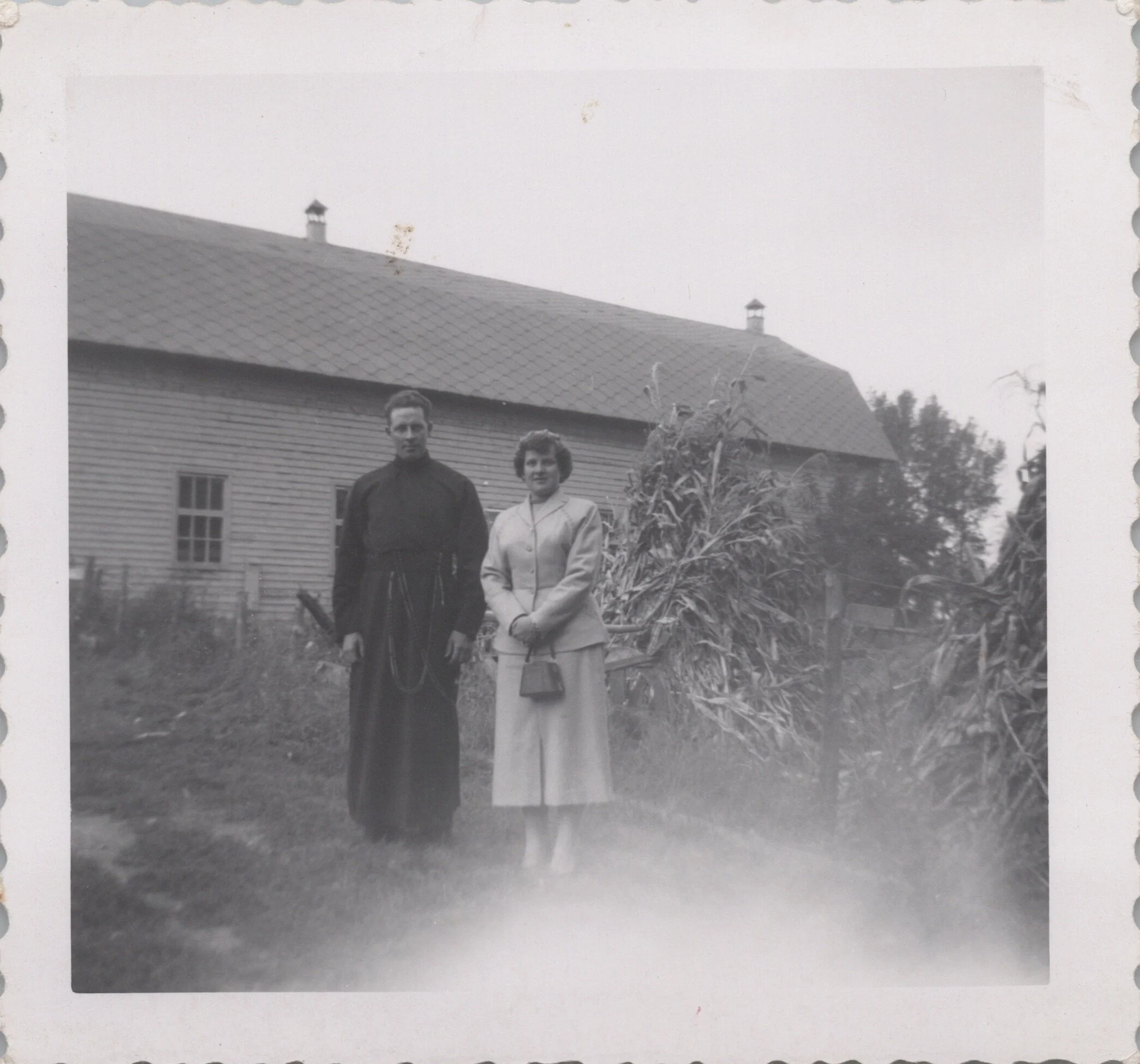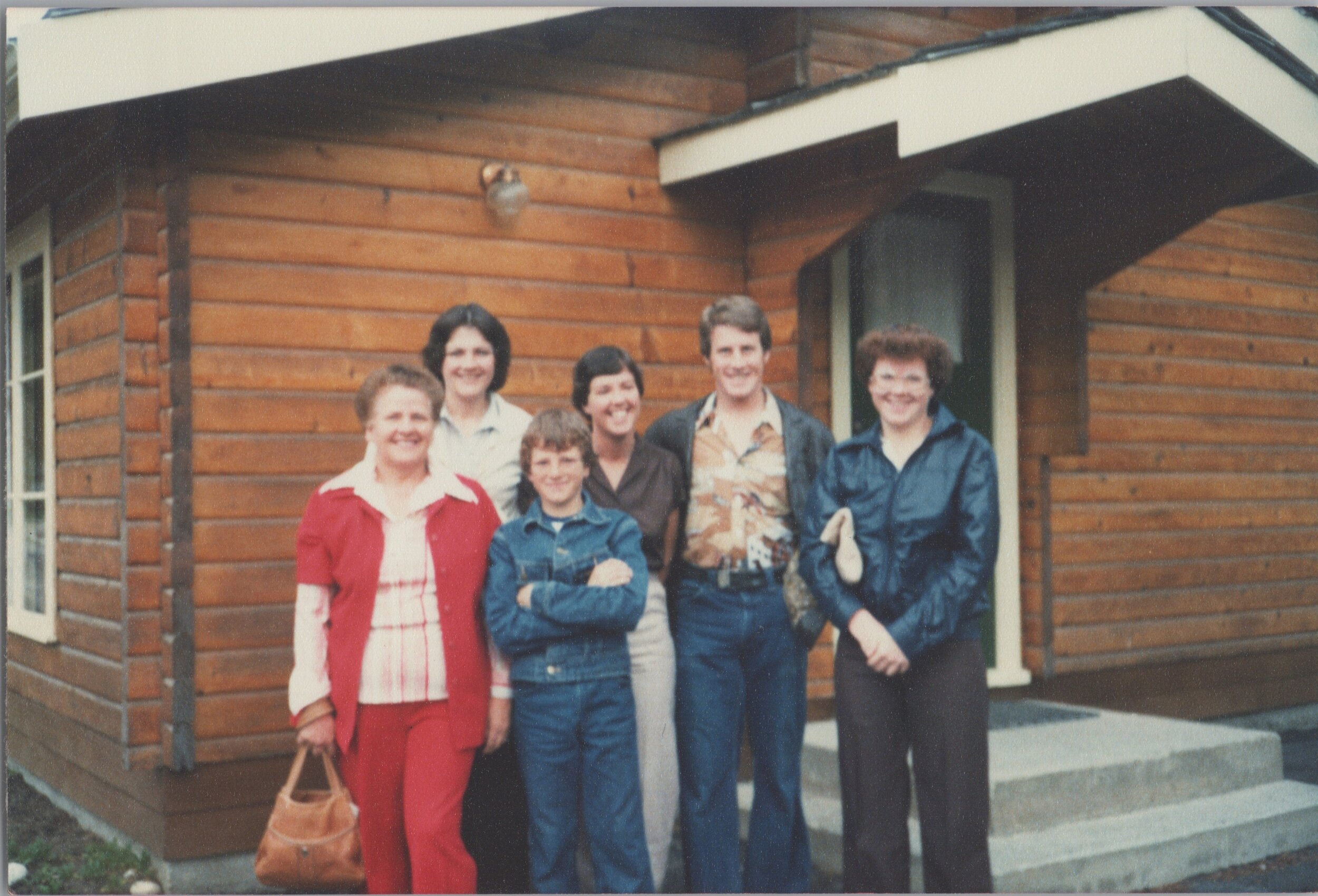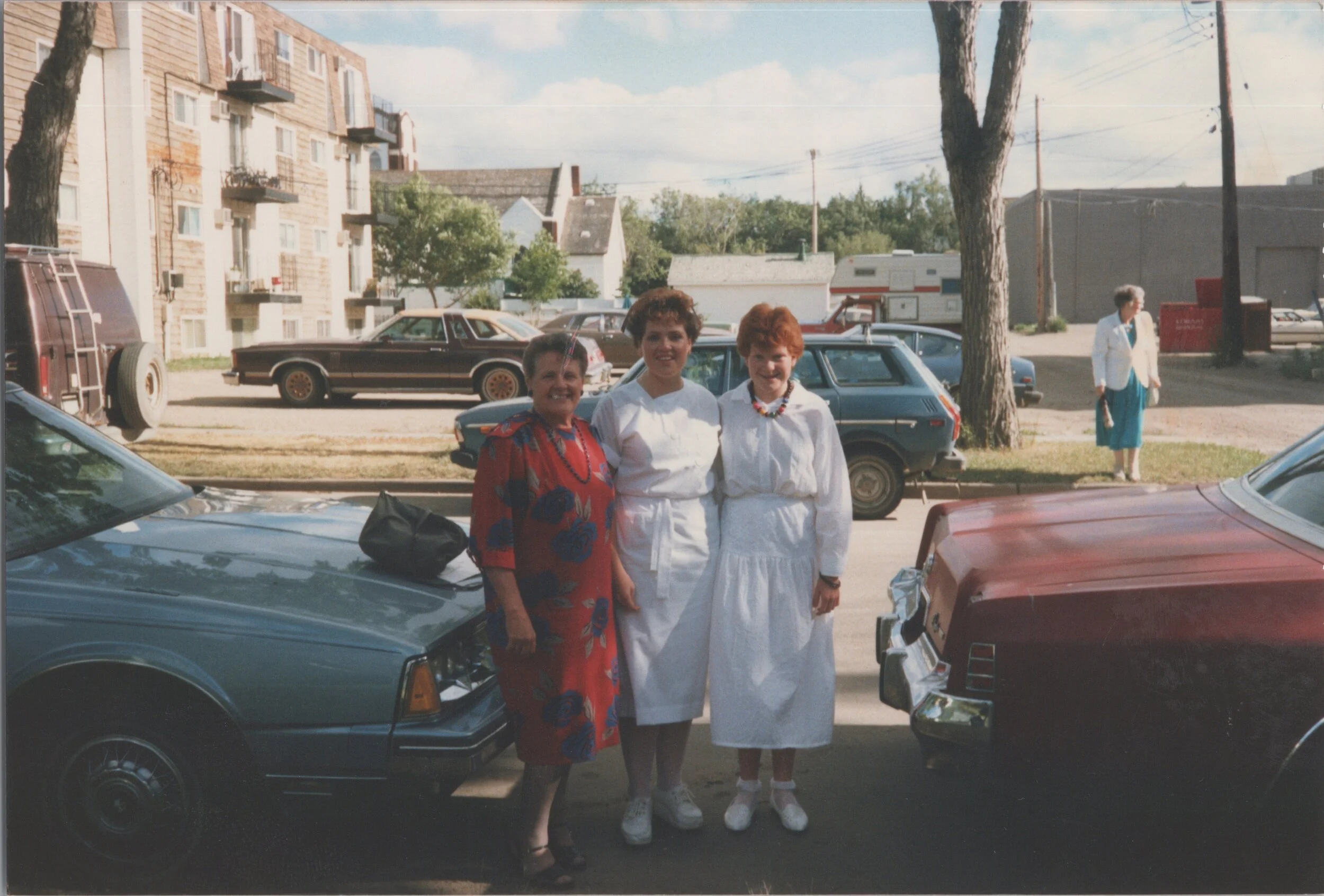Purses are that feminine accessory, useful for stashing Kleenex and cash, that can offer a parenthetical comment on a person’s taste. In television shows, they are often meaningfully chosen; a character named Rita, for example, is a rebel, and rather than have a purse, she has a soft cloth tote that magically produces the thing she needs while always looking light. In real life, women can choose purses without considering character implications. But gathering snapshots of purses over the course of a woman’s life can say something about them and about the style periods in which they lived.
In the 1950’s for example, Grandma chose tiny purses.
Perhaps the most novelty shaped purse Grandma owned was a box bag. (A similar style was in this 1953 Sears catalogue.)
In this picture, her friend also has a box bag.
She wasn’t tied to rigid designs though. Here is a soft gathered kind, and while the fifties were a decade when style guides encouraged matching accessories, Grandma preferred not to get hung up on details.
Even as a new mother, Grandma had a small black purse.
Then, as her family grew and her children grew, so did her purses.
One of her purses had a floral tapestry design, like these ones in a 1961 Sears catalogue.
Grandma seemed to have a fondness for black purses with metallic embellishments.
But there were brown purses, and cream and beige purses, and very slouchy purses too.
And I noticed, combing through a few hundred pictures, that sometimes Grandma didn’t want her purse in the picture, so it was put to the side, or to the front. But those purses would sneak in anyway. She noticed this too, because on the back of the last picture she wrote: “best picture of my purse.” She was in on the joke.






















